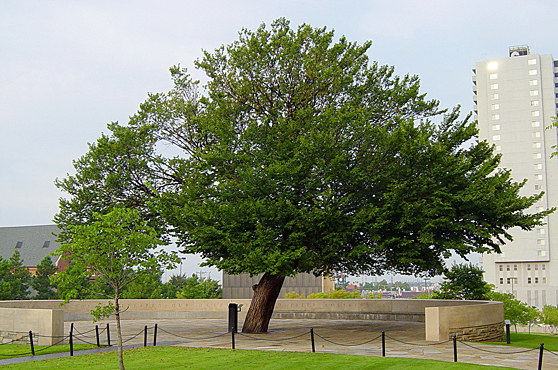Despite being across from the Alfred P. Murrah Federal Building in Oklahoma City, an American elm remained standing after the April 19, 1995, blast that devastated more than 16 city blocks.

Hear how this American elm was saved after the 1995 Oklahoma City bombing and has become known as the Survivor Tree at a talk Wednesday, April 29.
Mark Bays, urban forestry coordinator at Oklahoma Forestry Service, will tell the elm’s story and how it became known as the Survivor Tree Wednesday, April 29, at 7 p.m. in Snyder Memorial Building Room 2100.
“It’s just amazing how they saved this tree from complete destruction and how they brought this tree back to life, and not only that, but the steps they took to preserve it,” said Craig Schaar, forestry inspector of the city of Toledo. “They had to put underground irrigation in for it and create an aeration system for the tree roots. They also have a patio-like area around the tree, so they had to create an infrastructure so that the tree would survive. The tree was originally surrounded by a parking lot, so they had to bring in special soil and create an environment for this tree to actually grow.”
Since the beginning, Bays has been directly involved with bringing the community together to save and preserve the tree.“When the bombing happened, there were limbs blown off the tree, car parts embedded within the tree itself; you can actually see pictures where a car was wrapped around the tree trunk. Arborists would look at this tree and say, ‘Let’s just take it down,’” Schaar said.
“Bays saw all this and said, ‘You know what, we need to save this tree,’ and he decided to take it upon himself to get public support and politicians to save this tree,” Schaar said.
In conjunction with the presentation, a special tree planting was held April 24. A burr oak purchased by the Toledo Urban Forestry Commission was planted outside the Ritter Planetarium.
“The planting of this new tree on our campus recognizes both the significance of Arbor Day and Earth Day on our campus, but also this inspiring story on the importance of trees in urban communities and to those that live and work in a city who will be able to experience and admire these for many years,” said Dr. Patrick Lawrence, UT professor and chair in the Department of Geography and Planning, and chair of the President’s Commission on the River.
The free, public presentation is sponsored by the Toledo Urban Forestry Commission Inc., Findlay Shade Tree Commission, the UT Department of Geography and Planning, and the University of Findlay.
For more information, contact Schaar at craig.schaar@toledo.oh.gov or 419.936.2669.